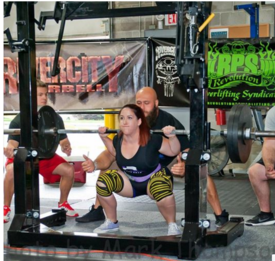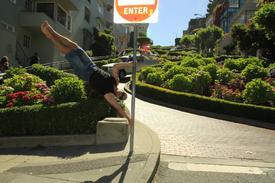Powerlifting and Pilates

wheird
Posts: 7,963 Member
http://blog.myfitnesspal.com/2014/06/8-myths-about-pilates-debunked/
I read the blog above and am curious if anyone combines a more traditional powerlifting routine with something less traditional such as Pilates. One of the claims in that blog is that Pilates, when done correctly, helps to engage the stabilizer muscles. If true, I can see some benefit to doing this, especially to help break through stalls and assist with form.
I generally try to add in some dumb bell work to engage these muscles but am unsure of the efficacy vs Pilates.
I read the blog above and am curious if anyone combines a more traditional powerlifting routine with something less traditional such as Pilates. One of the claims in that blog is that Pilates, when done correctly, helps to engage the stabilizer muscles. If true, I can see some benefit to doing this, especially to help break through stalls and assist with form.
I generally try to add in some dumb bell work to engage these muscles but am unsure of the efficacy vs Pilates.
0
Replies
-
My mom does pilates, and would ride my hind end because I'd tease her about it. I finally tried it with her one night, and it was at most a warm up. I think if you're power lifting, you're most likely past the point of pilates being useful as an accessory. I'm sure there are more difficult pilates routines than what my mom does (hers is like an intermediate program I think), but what I did with her in no way would be helpful for me.0
-
A lot of strong men and athletes do yoga. I am actually considering signing up for a class myself.0
-
My mom does pilates, and would ride my hind end because I'd tease her about it. I finally tried it with her one night, and it was at most a warm up. I think if you're power lifting, you're most likely past the point of pilates being useful as an accessory. I'm sure there are more difficult pilates routines than what my mom does (hers is like an intermediate program I think), but what I did with her in no way would be helpful for me.
Well the article did point out that some people find it easy because they are not doing it properly. That could potentially explain your ease with it.
Do you do anything outside of powerlifting, such as yoga? Flexibility and range of motion are also beneficial.0 -
A lot of strong men and athletes do yoga. I am actually considering signing up for a class myself.
I have considered this casually before, because I would love professional instruction in it.0 -
My mom does pilates, and would ride my hind end because I'd tease her about it. I finally tried it with her one night, and it was at most a warm up. I think if you're power lifting, you're most likely past the point of pilates being useful as an accessory. I'm sure there are more difficult pilates routines than what my mom does (hers is like an intermediate program I think), but what I did with her in no way would be helpful for me.
Well the article did point out that some people find it easy because they are not doing it properly. That could potentially explain your ease with it.
Do you do anything outside of powerlifting, such as yoga? Flexibility and range of motion are also beneficial.
I run alongside lifting, but that's it. I think I was doing it correctly, although it was a DVD so no instructor to correct form. Again, a more advanced DVD would probably be challenging for me.
I do think it would be useful for flexibility and range of motion, and I have considered adding something like that to my routine for those reasons. I'm not flexible at all - it has actually been a cause for injuries over the years, my joints and stuff just don't like to stretch as far as they should. But for a means of strength, or to work stabilizer muscles, pilates wouldn't be my first choice.0 -
Check this link out Tim:
http://www.t-nation.com/free_online_article/most_recent/yoga_yes_yoga_for_big_*kitten*0 -
And another interesting article:
http://breakingmuscle.com/mind-body/science-says-bikram-yoga-helps-your-deadlift0 -
Check this link out Tim:
http://www.t-nation.com/free_online_article/most_recent/yoga_yes_yoga_for_big_*kitten*
That is a really great article. I think I will start incorporating that into my daily routine.0 -
Try blogilates on youtube. https://www.youtube.com/channel/UCIJwWYOfsCfz6PjxbONYXSg
Her stuff is tough!0 -
I don't do Pilates specifically, but I do some Pilates moves as part of core strengthening for my physical therapy for my disc injury. (My PT facility is also a Pilates studio, and I've done Pilates in the past so I recognized the moves)
My disc was probably injured in the first place due to a weak core and form issues. My legs are stronger than my core.0 -
I have done yoga and body balance classes (yoga/pilates/tai chi mix). I am a very immobile person naturally so I make sure I do something like this to maintain my current mobility levels.
I don't really think that the isometric stuff done in a typical class is all that beneficial for me and my powerlifting as I don't really find them overly challenging strength wise just mobility wise.0 -
If you really want to work on your mobilty (and you should, because it will improve your strength gains to get full range of motion) go here:
http://www.mobilitywod.com/
And search the bodypart that needs work. You will get plenty of options for loosening tight joints and improving mobility. And most of them will be exquisitely painful when you first attempt them.0 -
I had some Pilates training in college about 25 years ago, when the only people who did were dancers and injured football players. I fall back on it now whenever I'm recovering from a back strain, and I do use it occasionally for core work. Yes, it engages stab muscles... You can't balance and twist in a V-up position without making pretty serious use of the stabs. You will feel it.
The nice thing about Pilates is that it's highly scalable. A beginner (or someone accommodating an injury) can "modify" exercises ad infinitum. Feet on the mat, legs in a tabletop position, V-up, and so on. Using a beginner video, one would never know that the exercise being taught is modified. Another nice thing is that although lots of fancy equipment exists, you don't need it... The mat sequence can be done with no equipment.
It's not so hot as a form of recovery stretching, though. If done properly, it is active body weight conditioning. Very different from what's shown in the "yoga for big *kitten*" article. I've just recently incorporated piriformis stretches and yoga into my workouts after a nasty bout of sciatica brought on by too much lifting/bag work and not enough (read, not any) stretching.
ETA: That whole thing about "lengthening muscles" is overblown on all sides. It just means you're stretching during the sequence. No different from Mark Rippetoe saying "the goodmorning improves hamstring length." Which, yes, he does say on p.263 of Starting Strength, 3rd Ed.0 -
I do hot yoga once or twice a week, like Chris said, for mobility.0
This discussion has been closed.







